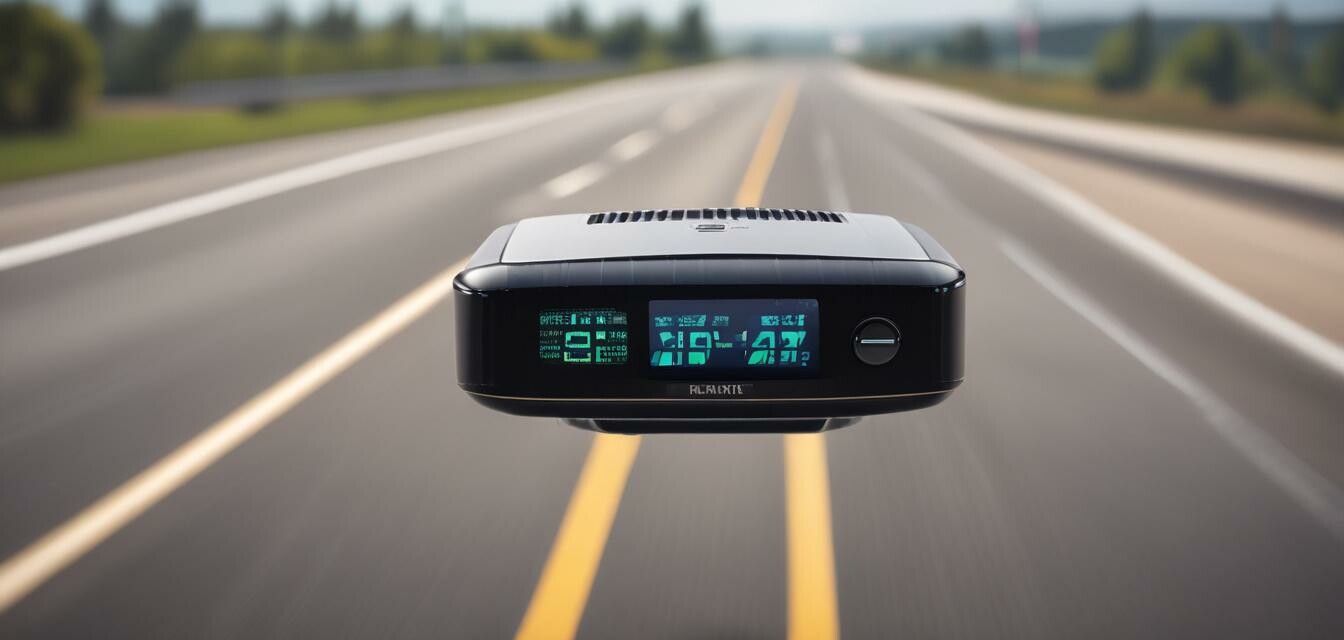
2025 Radar Detector Trends: What’s New?
Key Takeaways
- Emphasis on integrated GPS technology.
- Rise of smartphone compatibility for improved user experience.
- Enhancements in signal detection range and accuracy.
- Growing concerns about legal regulations and compliance.
- Trends towards eco-friendly and energy-efficient models.
The radar detector industry is evolving rapidly, especially as we head into 2025. In this article, we will explore the newest trends affecting radar detectors, including advancements in technology, user expectations, and regulatory changes. Whether you're a first-time buyer or looking to upgrade your existing device, knowing what’s on the horizon can help you make informed decisions. Let’s dive in!
Integration of GPS Technology
As we move towards 2025, one of the most notable trends is the incorporation of GPS technology in radar detectors. This trend is enhancing the overall functionality of radar systems. Here are some advantages of GPS-enabled radar detectors:
- Alerts on fixed speed cameras and common speed trap locations.
- Enhanced ability to filter out false alerts based on historical data.
- Real-time updates on road conditions and speed limits.
Impact on User Experience
The integration of GPS not only improves detection capabilities but also significantly enhances the user experience. This technology provides a layer of reliability, ensuring drivers are alerted only when necessary, thereby reducing distractions.
Smartphone Compatibility
Another trend gaining traction is the compatibility of radar detectors with smartphones. Many new models offer features that allow users to connect their devices via Bluetooth. This offers several benefits:
- Access to real-time updates and community alerts.
- Ability to customize settings through a mobile app.
- Sharing of data with other users for enhanced accuracy and safety.
Benefits of Mobile Integration
Smartphone compatibility makes radar detectors more user-friendly, allowing drivers to customize their experience without needing to fiddle with the device while driving. This is crucial for maintaining focus on the road.
Improved Signal Detection Capabilities
The technological advancements leading up to 2025 also encompass improved signal detection capabilities. Manufacturers are investing in research and development to enhance the range and precision of their devices. Here are some significant improvements:
| Feature | Previous Models | 2025 Models |
|---|---|---|
| Signal Range | Up to 1.5 miles | Up to 3 miles |
| Frequency Bands Detected | Laser, Ka, K | All known bands + Multi-Radar |
| False Alert Filtering | Basic filtering | Advanced AI-driven filtering |
Benefits of Enhanced Detection
The improvements in signal detection give drivers more time to react, which can be critical in preventing tickets and accidents. Knowing how far ahead a radar is being detected ensures better decision-making on the road.
Regulatory Changes and Compliance
As technology progresses, regulatory bodies are also adapting. In 2025, there are expected changes in laws surrounding radar detectors. It is crucial for users to stay informed about these shifts:
- Increased emphasis on legal compliance features in radar detectors.
- New regulations surrounding the use of detectors in certain regions.
- Potential restrictions on specific kinds of detection technologies.
Staying Informed
Users should regularly check for updates to local and national laws to ensure they remain compliant while employing radar detection technology. Failure to do so could lead to legal penalties.
Sustainability Trends
The push for sustainability is influencing the radar detector market as well. In 2025, we anticipate a rise in eco-friendly options:
- Devices made with recyclable materials.
- Energy-efficient features to reduce Power consumption.
- Longer-lasting batteries and reduced packaging waste.
The Future of Sustainable Practices
Buyers are increasingly looking for products that reflect their values. As sustainability becomes a critical factor for many consumers, manufacturers will need to adapt to meet these expectations.
Pros
- Enhanced detection and user experience with GPS integration.
- Smartphone compatibility allows for real-time updates.
- Improved accuracy and range in signal detection.
- Sustainability options will appeal to eco-conscious consumers.
Cons
- Increased costs associated with advanced technology.
- Potential legal implications based on regional regulations.
- Learning curve for new technology features.
Conclusion
The radar detector industry is set for a dynamic year ahead in 2025. With advancements in technology focused on user needs, alongside regulatory considerations and sustainability, the market will continue evolving. Whether you're considering purchasing a new radar detector or simply keeping informed on trends, these developments will shape future experiences.
For more insights into the radar detector market and tips on getting the best device for your needs, explore our Buying Guides section and stay updated with News and Trends in the industry.
Stay tuned to Radar Catcher for more updates on radar detector technology and trends that can empower you on the road!
